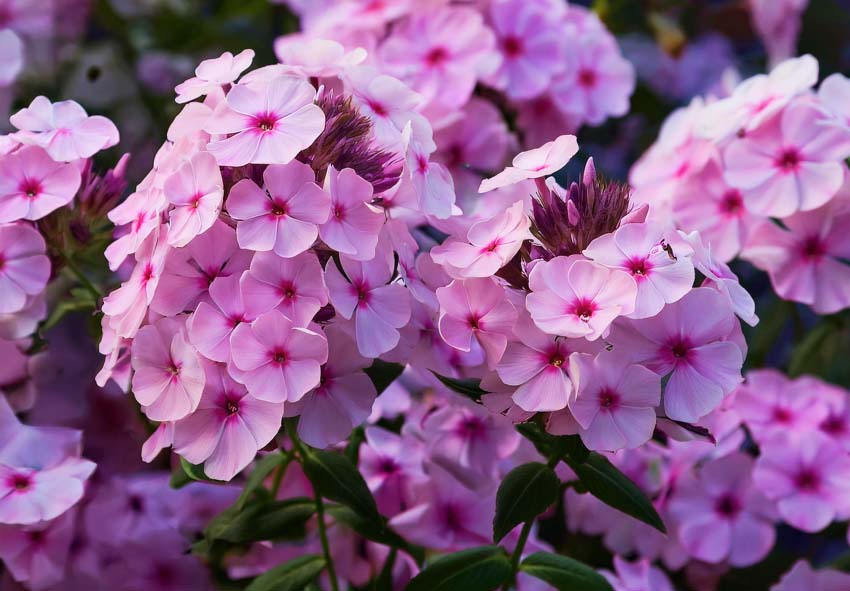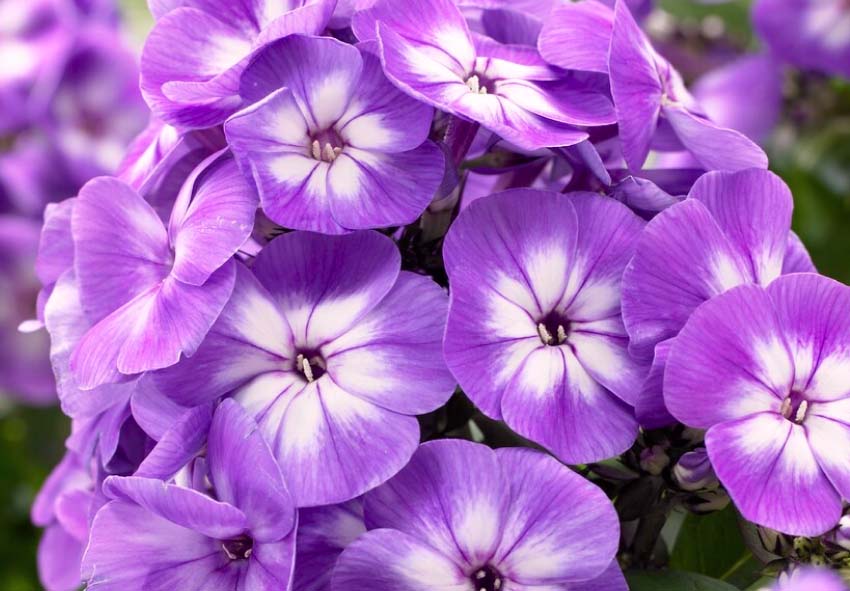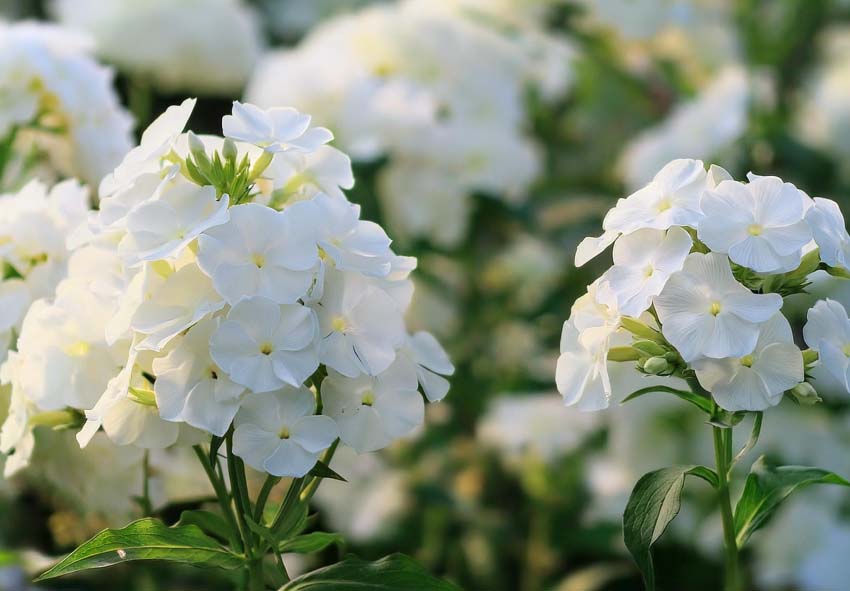Phlox is a beloved garden favorite, known for its vibrant colors and long-lasting blooms. As summer transitions to fall, planting phlox in September offers gardeners an opportunity to extend their flowering season and prepare for an even more stunning garden next spring. With a wide variety of phlox available, it’s easy to find the perfect types to enhance your garden’s beauty as the cooler months approach. Our gardening blog is a perfect place to find all the information you need!
Planting phlox in September not only adds vibrant colors to your fall landscape but also gives the plants a head start in establishing strong roots before winter. By choosing the right varieties, you can enjoy extended blooms while setting your garden up for success in the next growing season.
Why Plant Phlox in September?

Planting phlox in early fall offers multiple benefits, ensuring healthy plants and better blooms for the coming year. September provides ideal conditions for planting certain phlox varieties, setting your garden up for spring success.
Ideal Growing Conditions in Early Fall
September’s cooler temperatures and moist soil conditions create the perfect environment for phlox to establish roots. This allows the plant to focus on growth rather than battling the summer heat. Early fall planting gives phlox enough time to adapt and strengthen before winter dormancy, which leads to more robust plants in the spring.
The moderate weather also reduces transplant shock, and with fewer pests around, plants can thrive more easily. By the time spring arrives, your phlox will be well-rooted and ready to bloom beautifully.
Benefits of Fall Planting
Planting phlox in September offers several key benefits for a vibrant and healthy garden. By giving your plants an early start in fall, you can ensure they thrive and produce stunning blooms come spring. Here are some main benefits:
- Extends Blooming Season: Planting phlox in September sets the stage for a longer blooming season, as the plants have ample time to establish themselves before winter. This early preparation means that come spring, your garden will experience an extended period of vibrant blooms.
- Enhanced Root Development: During the fall, phlox plants focus on building a strong root system rather than producing blooms. This underground growth makes them more resilient in the coming year, leading to healthier and more robust plants when growth resumes in the warmer months.
- Protection Against Frost: By planting in mid-September, you allow the phlox to take advantage of the mild temperatures and moisture levels before the first frost. This head start helps them anchor into the soil, reducing the risk of frost damage and ensuring they survive the winter months.
- Boosted Spring Performance: Phlox planted in fall tend to bloom earlier and more abundantly the following spring. The energy they’ve conserved through root development will translate into larger, more colorful flowers, providing an impressive display as soon as the weather begins to warm up.
- Natural Pest and Disease Resistance: Fall planting often results in less exposure to pests and diseases compared to spring planting. Cooler temperatures and reduced pest activity during autumn create a more favorable environment for phlox to establish themselves without the risk of infestation or disease.
Top 5 Phlox Varieties to Plant in September

For those looking to add phlox to their fall garden, these five varieties are perfect candidates for September planting. They offer a range of colors, sizes, and growing habits, making them suitable for various garden settings.
Phlox paniculata ‘Kirchenfurst’
Phlox paniculata ‘Kirchenfurst’ is a majestic, deep red variety that instantly catches the eye. Known for its intense color, this phlox adds a bold statement to any garden. The large clusters of flowers bloom from mid-summer to early fall, creating a vibrant display. ‘Kirchenfurst’ typically reaches a height of about 3 feet, making it ideal for the middle or back of garden borders. Its upright growth habit and striking flower color make it a popular choice for gardeners looking to add a splash of red to their landscapes.
One of the standout features of ‘Kirchenfurst’ is its resilience. It thrives in full sun and well-drained soil, making it a low-maintenance option for gardeners in a variety of climates. While it prefers sunny locations, it can tolerate light shade, especially in hotter regions, where too much sun can cause stress to the plant. This variety is also moderately resistant to powdery mildew, a common issue with some phlox varieties, meaning you can enjoy its blooms with minimal concern for disease.
For those looking to attract pollinators, ‘Kirchenfurst’ is a great choice. Its bright red flowers are a magnet for bees, butterflies, and other beneficial insects. This makes it a wonderful addition to wildlife-friendly gardens. Moreover, its tall stature and bold coloring make it an excellent companion plant for other late-blooming perennials such as Rudbeckia, Echinacea, or ornamental grasses, creating a striking contrast in texture and color.
For planting ‘Kirchenfurst’ phlox in September, follow these guidelines to ensure strong growth and a healthy plant come spring:
- Plant in well-draining soil enriched with organic matter.
- Space plants 18 to 24 inches apart for good air circulation and disease prevention.
- Focus on root development during fall to prepare for vigorous spring growth.
Phlox paniculata ‘Bright Eyes’

Phlox paniculata ‘Bright Eyes’ is a garden favorite, known for its lovely pale pink petals with a striking dark pink eye at the center of each flower. This variety blooms from mid-summer through early fall, providing a long-lasting display of color. ‘Bright Eyes’ is more compact than other phlox varieties, growing to about 2 feet tall, making it perfect for smaller garden spaces, containers, or as a border plant. Its compact size also makes it easy to blend with other low-growing perennials, offering gardeners more flexibility in landscape design.
This variety thrives in full sun to partial shade, adapting well to different garden environments. In regions with very hot summers, partial shade can help protect ‘Bright Eyes’ from excessive heat, ensuring that the blooms remain vibrant and healthy. It prefers rich, well-drained soil with a slightly acidic to neutral pH, and like most phlox varieties, it benefits from a layer of mulch to help retain moisture and suppress weeds.
One of the reasons why ‘Bright Eyes’ is so popular among gardeners is its reliable performance. It is known for being more resistant to powdery mildew compared to other phlox varieties, which can be a significant issue during humid summer months. This disease resistance, combined with its long bloom period, makes ‘Bright Eyes’ a low-maintenance yet high-reward plant for any garden. Regular deadheading of spent blooms will encourage even more flowering, helping to extend the season of interest.
For successful September planting of ‘Bright Eyes’ phlox, follow these simple steps to ensure healthy growth and vibrant blooms next spring:
- Ensure sufficient space, about 12 to 18 inches apart.
- Prepare the soil with organic compost for nutrient-rich support.
- Focus on strong root development before winter arrives.
Phlox paniculata ‘Laura’
Phlox paniculata ‘Laura’ is one of the most striking and beloved varieties due to its vivid purple blooms with contrasting white centers. This eye-catching variety can grow up to 4 feet tall, making it a perfect choice for adding height to garden beds and borders. The bold coloration of ‘Laura’ stands out beautifully in both cottage and formal gardens, and its long-lasting blooms from mid-summer to early fall ensure continuous interest.
What makes ‘Laura’ particularly appealing is its resistance to powdery mildew, a common problem with many phlox varieties. This disease resistance means you can enjoy its lush blooms without worrying about foliage damage. In addition to its strong health, ‘Laura’ is highly attractive to pollinators, especially butterflies, making it a wonderful addition to a wildlife-friendly garden.
Like most phlox, ‘Laura’ thrives in full sun and well-drained soil. However, it can also tolerate partial shade, particularly in areas with intense summer heat. Regular watering is important to keep the plant hydrated, but the soil must drain well to prevent root rot. A layer of mulch will help maintain soil moisture and temperature, which is especially beneficial during the hot summer months when the plant is actively growing and blooming.

For planting ‘Laura’ phlox in September, follow these simple steps to ensure healthy growth and vibrant blooms next spring:
- Prepare the soil with organic compost to create a nutrient-rich environment.
- Plant in fall to allow roots to establish before winter.
- Ensure strong root development for full, vigorous blooms in the spring.
Phlox paniculata ‘Amethyst’
Phlox paniculata ‘Amethyst’ is renowned for its rich purple flowers that bloom from mid-summer through early fall. The deep amethyst color is striking against a backdrop of green foliage, making this variety a standout in any garden. Growing up to 3 feet tall, ‘Amethyst’ provides height and structure, which makes it an ideal plant for the middle or back of flower borders. Its vibrant color pairs well with other purple and blue perennials or even with contrasting yellows and whites for a dynamic garden display.
One of the key benefits of growing ‘Amethyst’ is its resistance to powdery mildew, a common issue that affects many phlox varieties, especially in humid conditions. This makes ‘Amethyst’ an excellent choice for gardeners who live in regions with high humidity or who have had issues with mildew in the past. Its ability to thrive without succumbing to disease makes it a reliable option for long-term planting.
‘Amethyst’ prefers full sun but can tolerate light shade, particularly in areas with very hot summers. It grows best in moist, well-drained soil that is rich in organic matter. Regular watering is essential during dry spells, but it’s important to avoid waterlogging the soil, as alliums are susceptible to root rot if the soil stays too wet. Mulching around the base of the plant helps retain moisture and keep the roots cool, which is especially beneficial in hotter climates.
For planting ‘Amethyst’ phlox in September, follow these steps to promote healthy growth and abundant blooms next spring:
- Choose a spacious location, spacing plants 18 to 24 inches apart for optimal air circulation.
- Plant in fall to focus on root establishment before winter.
- Ensure good air circulation to help prevent disease and support vigorous spring growth.
Phlox paniculata ‘Rembrandt’

Phlox paniculata ‘Rembrandt’ is a graceful and elegant variety known for its delicate lavender blooms with a subtle fragrance. Growing to about 2.5 feet tall, ‘Rembrandt’ adds a soft, romantic touch to the garden and pairs well with both bold and muted garden designs. Its lighter color makes it a great choice for brightening up shaded areas or adding contrast to darker foliage and flowers.
While ‘Rembrandt’ may have a more understated color compared to some of the brighter phlox varieties, its beauty lies in its refinement and subtle charm. The blooms appear from mid-summer to early fall, providing a long season of color. This variety is also relatively resistant to powdery mildew, making it easier to care for in more humid environments.
‘Rembrandt’ thrives in full sun to partial shade, and like other phlox varieties, it prefers rich, well-drained soil. Regular watering is essential, particularly during the hot summer months, but as with all phlox, it’s important to avoid waterlogged soil. Mulching around the plant helps retain moisture and keeps the roots cool, promoting healthy growth and reducing the need for frequent watering.
For planting ‘Rembrandt’ phlox in September, follow these guidelines for optimal growth and spring blooms:
- Improve soil by adding organic matter for better drainage and nutrients.
- Plant in fall to establish roots before colder months.
- Space plants 12 to 18 inches apart for good air circulation and disease prevention.
Conclusion
Planting phlox in September is a smart strategy for gardeners looking to add vibrant colors and textures to their outdoor spaces. By taking advantage of the ideal growing conditions in early fall, you can ensure that your phlox varieties develop strong root systems that will lead to healthier, more beautiful blooms in the spring.
Whether you choose the bold ‘Kirchenfurst’ or the elegant ‘Rembrandt,’ each of these phlox varieties has something special to offer. Explore these options and more at our online plant store, and prepare your garden for a spectacular display next season!
Frequently Asked Questions (FAQs) about Planting Phloxes in September
1. How far apart should I plant phloxes varieties in September?
For phlox varieties, plant them about 12 to 24 inches apart, depending on the variety. This spacing allows for adequate air circulation, which helps prevent disease and supports healthy growth. Ensure to follow specific recommendations for each variety to optimize their development.
2. Why is September a good time to plant phloxes?
September is ideal for planting phlox because the cooler temperatures and moist soil conditions promote strong root development. Planting in fall gives phlox a head start, allowing them to establish themselves before winter and resulting in earlier and more abundant blooms in the spring.
3. What type of soil is best for planting phloxes in September?
Phlox thrives in well-draining soil enriched with organic matter. Before planting, improve soil by adding compost to enhance drainage and nutrient content. This preparation helps ensure strong root development and robust growth for a beautiful spring display.
4. Can I order Holland Phloxes from your online store?
Yes, we offer a wide selection of Phloxes, including some varieties originating from Holland, renowned for their quality and beauty. Our online store Dutch-bulbs.com features a diverse range of Phloxes. Explore our collection to find the perfect Phlox varieties for your garden or landscaping projects.
5. How do I care for phloxes planted in September?
After planting phlox in September, ensure they receive regular watering to establish roots before winter. Mulch around the plants to retain moisture and protect the soil. In spring, monitor for pests and diseases, and provide appropriate fertilizer to support healthy growth and blooming.
Published: 17.09.2024
